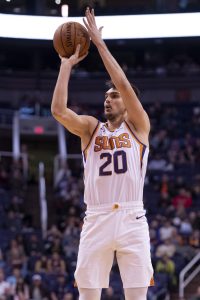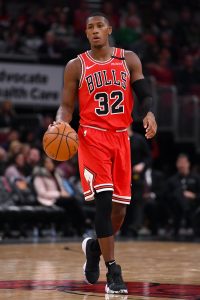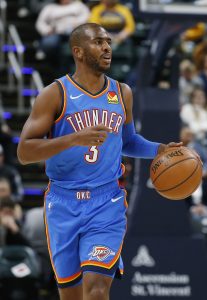During a typical NBA league year, there’s a pretty clear-cut period in the spring when the league’s various head coaching searches take place. A team parting ways with a coach generally makes that decision when the team’s season ends, then hires a replacement sometime before the draft and free agency.
That coaching-search window in 2020 lasted a little longer than that due to the fact that only 22 of 30 teams participated in the summer restart. A team like the Knicks, which wasn’t part of the return to play, launched its head coaching search in June and finalized it in July. However, the Thunder, who participated in the restart, didn’t finalize their coaching search until November.
Keeping that in mind, we created a space to track this offseason’s head coaching searches, whether they took place in June, November, or sometime in between. In the space below, we’ll provide frequent updates on the head coaching searches for each club that has yet to give anyone the permanent title, as well as noting other situations worth keeping an eye on.
You’ll be able to access this page anytime under the “Hoops Rumors Features” menu on the right sidebar on our desktop site, or on the “Features” page in our mobile menu.
Updated 11-11-20 (9:26am CT)
Active Searches:
None
Completed Searches:
Brooklyn Nets
- New coach:
- Steve Nash (story)
- Previous coach:
- Jacque Vaughn (interim)
- Also reportedly considered:
Vaughn, who took over for Kenny Atkinson in August, was considered for the job on a permanent basis, but there was a belief that the Nets were seeking a more accomplished veteran coach to lead a roster headed by Kevin Durant and Kyrie Irving.
In Nash, Brooklyn didn’t exactly get a head coach with a lengthy résumé — the former two-time MVP has no previous coaching experience, even as an assistant. However, he has a good relationship with Durant after spending time as a Warriors consultant, and figures to command the respect of the Nets’ stars and veterans based on his success as a player.
Nash reportedly signed a four-year contract.
Chicago Bulls
- New coach:
- Billy Donovan (story)
- Previous coach:
- Jim Boylen (story)
- Also reportedly considered:
- Sixers assistant Ime Udoka (story)
- Former Nets coach Kenny Atkinson (story)
- Nuggets assistant Wes Unseld Jr. (story)
- Bucks assistant Darvin Ham (story)
- Mavericks assistant Stephen Silas (story)
- Mavericks assistant Jamahl Mosley (story)
- Timberwolves associate head coach David Vanterpool (story)
- Heat assistant Dan Craig (story)
- Bulls assistant Chris Fleming (story)
- Bulls assistant Roy Rogers (story)
- Raptors assistant Adrian Griffin (story)
It always seemed unlikely that new Bulls executives Arturas Karnisovas and Marc Eversley would keep Boylen in his current role, given his underwhelming results over the last two seasons and the fact that most front offices prefer to bring in their own head coach. They eventually relieved Boylen of his duties on August 14, hiring Donovan five-and-a-half weeks later.
While Chicago considered a wide range of candidates, including many current assistant coaches, the front office reportedly “aggressively pursued” Donovan, believing he was the best candidate on the market and the right fit to lead the Bulls’ promising young roster. He reportedly received a four-year contract worth approximately $24MM.
Houston Rockets
- New coach:
- Stephen Silas (story)
- Previous coach:
- Mike D’Antoni (story)
- Rumored candidates or targets:
- Rockets player development coach John Lucas (story)
- Former Knicks/Rockets coach Jeff Van Gundy (story)
- Former Nets coach Kenny Atkinson (story)
- Timberwolves associate head coach David Vanterpool (story)
- Nuggets assistant Wes Unseld Jr. (story)
- Clippers assistant Tyronn Lue (story)
- Clippers assistant Sam Cassell (story)
D’Antoni and the Rockets were unable to reach an agreement on a contract extension last offseason, resulting in him entering the final year of his current deal without any assurances beyond 2019/20. After the team was eliminated in the second round of the postseason, D’Antoni announced that he wouldn’t be returning to Houston, leaving the Rockets to seek a new head coach.
After a search process that saw them narrow their finalists to Silas, Van Gundy, and Lucas, the Rockets opted for the first-timer in Silas rather than a veteran with previous head coaching experience.
Indiana Pacers
- New coach:
- Nate Bjorkgren (story)
- Previous coach:
- Nate McMillan (story)
- Also reportedly considered:
- Pelicans assistant Chris Finch (story)
- Former Rockets head coach Mike D’Antoni (story)
- Former NBA guard Chauncey Billups (story)
- Heat assistant Dan Craig (story)
- Heat assistant Chris Quinn (story)
- Timberwolves associate head coach David Vanterpool (story)
- Nets associate head coach Jacque Vaughn (story)
- Trail Blazers associate head coach Nate Tibbetts (story)
- Spurs assistant Becky Hammon (story)
- Spurs assistant Will Hardy (story)
- Mavericks assistant Jamahl Mosley (story)
- Mavericks assistant Stephen Silas (story)
- Bucks assistant Darvin Ham (story)
- Bucks assistant Charles Lee (story)
- Sixers assistant Ime Udoka (story)
- Magic assistant Pat Delany (story)
- Warriors assistant Mike Brown (story)
- Former Kings and Grizzlies coach Dave Joerger (story)
While there were some whispers about McMillan’s job security early in August, it seemed as if the Pacers had put those rumors to rest by working out a one-year contract extension with their head coach a few days later. However, after being swept out of the first round by the Heat, Indiana changed course, announcing that McMillan had been relieved of his duties.
The Pacers spoke to a long list of candidates as they sought McMillan’s replacement, conducting one of the NBA’s most in-depth coaching searches of the year. They ultimately landed on an under-the-radar choice in Bjorkgren, a Raptors assistant who doesn’t have any previous head coaching experience.
Los Angeles Clippers
The Clippers’ season ended in brutal fashion — less than a week after taking a 3-1 lead over Denver in the Western Conference Semifinals and being dubbed championship frontrunners by oddsmakers, they had blown that 3-1 lead and were out of the playoffs. Still, Rivers’ exit came as something of a surprise, given his championship résumé and his history with the franchise.
With Kawhi Leonard and Paul George eligible to reach free agency in 2021, the Clippers faced a ton of pressure to find the right win-now coach to lead the team next season and opted for an in-house option with championship experience. Lue, who received a five-year contract from the team, won a title during his first year as Cleveland’s head coach in 2016 and will try to do it again in Los Angeles after spending the 2019/20 season as Rivers’ lead assistant.
New Orleans Pelicans
An underwhelming finish to the 2019/20 season helped seal Gentry’s fate. He led the Pelicans to the postseason just once in five seasons and only had a single year remaining on his contract when he was dismissed on August 15.
The Pelicans’ coaching search ultimately led them to Van Gundy, whom the club trusts to teach and develop its young players, including potential franchise player Zion Williamson. Van Gundy, who will be coaching his fourth NBA team, received a four-year contract.
New York Knicks
- New coach:
- Tom Thibodeau (story)
- Previous coach:
- Mike Miller (interim)
- Also interviewed:
- Miller (story)
- Former Nets coach Kenny Atkinson (story)
- Former Knicks coach Mike Woodson (story)
- Sixers assistant Ime Udoka (story)
- Magic assistant Pat Delany (story)
- Bulls assistant Chris Fleming (story)
- Spurs assistant Will Hardy (story)
- Mavericks assistant Jamahl Mosley (story)
- Warriors associate head coach Mike Brown (story)
- Lakers assistant Jason Kidd (story)
Thibodeau was long cited as the presumed frontrunner in the Knicks’ head coaching search, but the team conducted a wide-ranging search rather than simply handing him the job. Atkinson generated some buzz during the process, with Miller and Kidd receiving serious consideration as well. In the end, however, the Knicks went with Thibodeau, agreeing to a five-year contract to make him their new head coach.
Oklahoma City Thunder
- New coach:
- Mark Daigneault (story)
- Previous coach:
- Billy Donovan (story)
- Rumored candidates or targets:
The Thunder’s split with Donovan was, by all accounts, an amicable one. Donovan’s contract with the club expired in 2020 and with a potential rebuild looming, the two sides decided they didn’t ultimately see eye-to-eye on what the next few years would look like in Oklahoma City.
The club sought a first-time coach who would be comfortable going through a rebuilding process and found Donovan’s replacement in house in Daigneault. Having served as the head coach of the Oklahoma City Blue in the G League for five years and as a member on Donovan’s staff for a single season, the 35-year-old will get his first shot at an NBA head coaching job.
Philadelphia 76ers
Brown was let go by the Sixers approximately 24 hours after Philadelphia’s quick and disappointing playoff exit. He spent seven years with the franchise, but his time as head coach had run its course.
Having been in the market for a coach capable of challenging and commanding the respect of their star players, the Sixers zeroed in on D’Antoni and Lue before shifting their focus to Rivers when he left Los Angeles. They finalized an agreement with Rivers just 72 hours after word broke that he had parted ways with the Clippers.
 With that in mind, let’s check in on how this year’s RFAs-to-be will be impacted by the starter criteria. Listed below are the former top-14 picks on track for restricted free agency who have not met the starter criteria. These players will be eligible for qualifying offers worth $4,642,800.
With that in mind, let’s check in on how this year’s RFAs-to-be will be impacted by the starter criteria. Listed below are the former top-14 picks on track for restricted free agency who have not met the starter criteria. These players will be eligible for qualifying offers worth $4,642,800.



